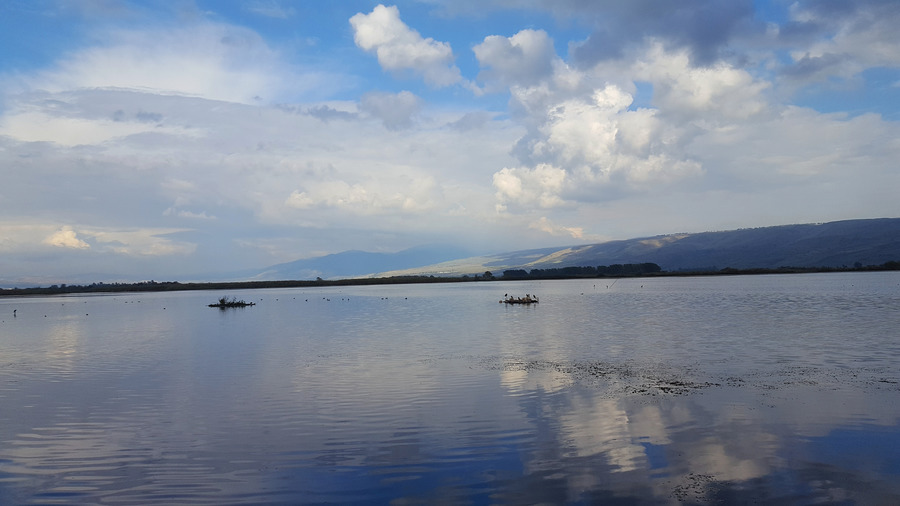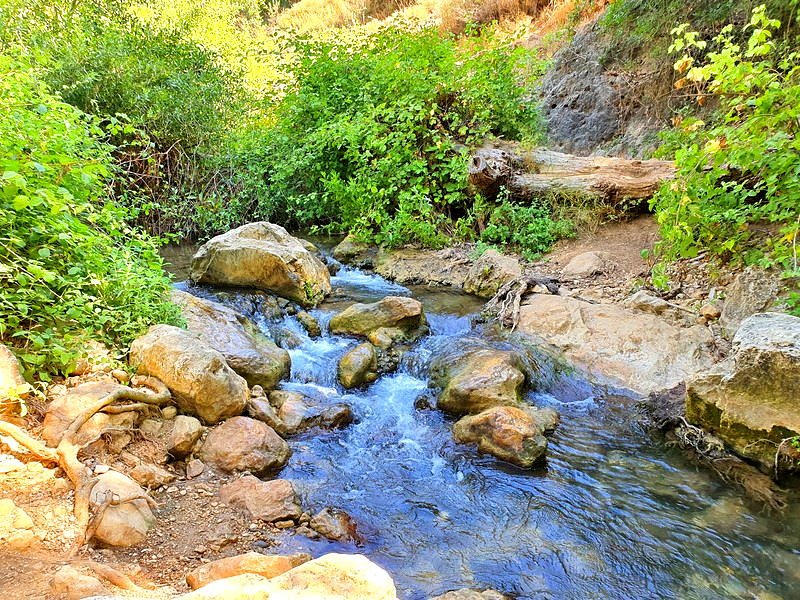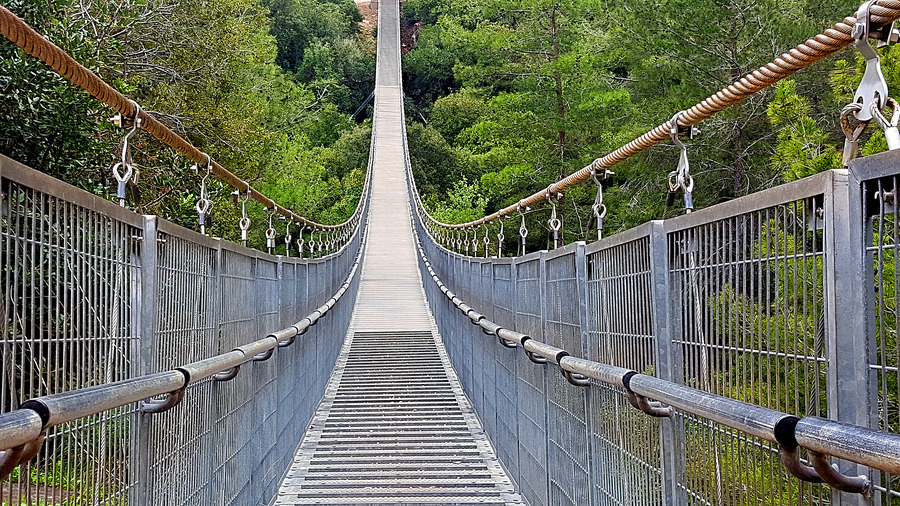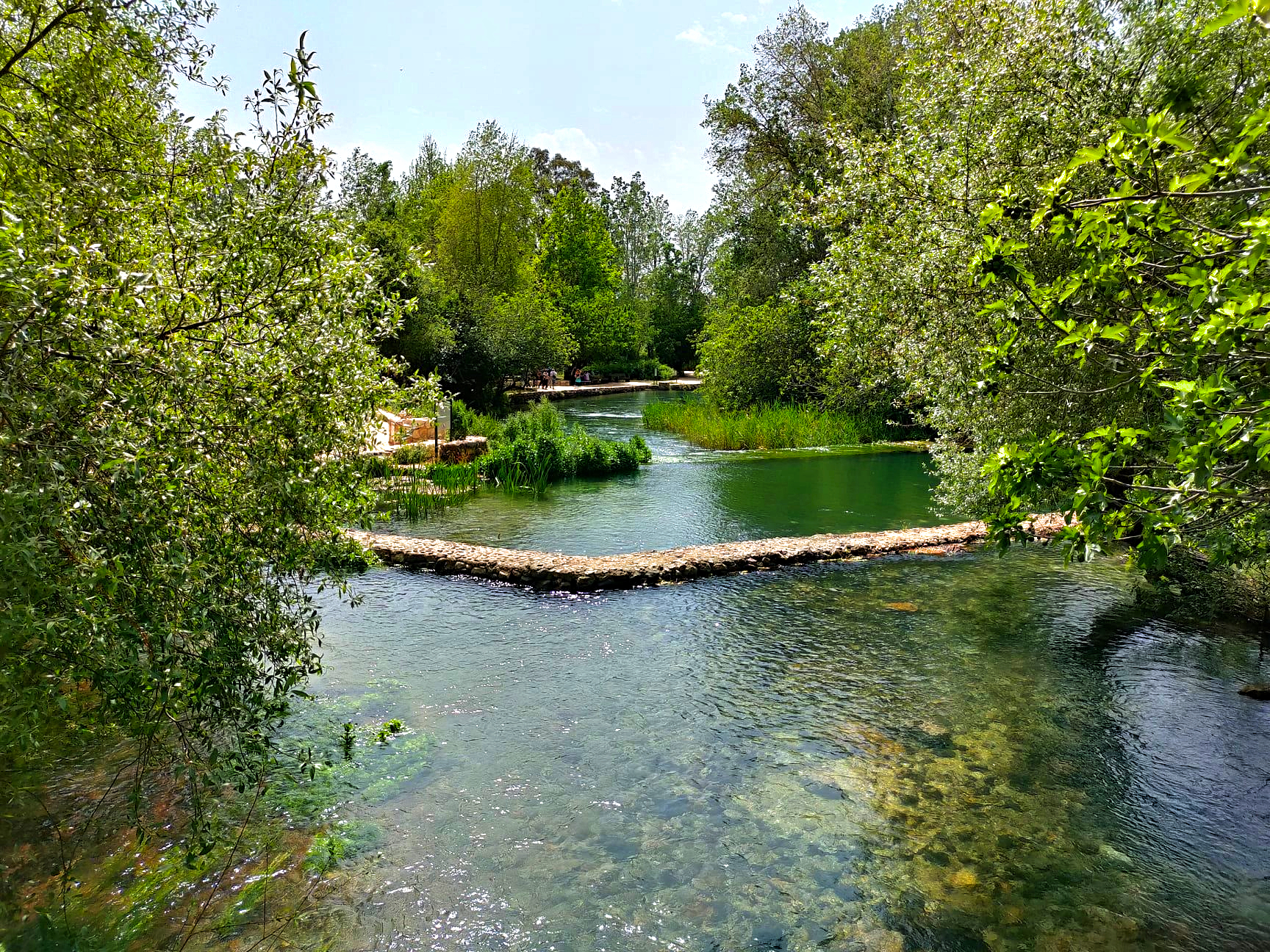5 Best Winter Hikes in Northern Israel
Most tourists miss out on the incredible landscapes of Israel but in fact, the Holy Land is crisscrossed with numerous interesting hike routes and has over 60 national parks and nature reserves. Each season nature paints the land with different colors and you can see animals and plants unique to each season. Winter is no exception. Israeli winters are extremely mild compared to Europe or the US and you can easily enjoy hikes across the country and especially in Northern Israel. Not only that but with the winter comes rain and hikers can enjoy abundant waterfalls flowing streams and lush vegetation and wildflowers that come alive after a thirsty summer.

The Hula Lake, Israel. Photo credit: © Oksana Mats
1. The Hula Lake (Agamon HaHula)
Winter is the perfect time to visit Agamon HaHula (the Hula Lake). Israel is a stopover point for thousands of migrating birds each winter and the Agamon HaHula happens to be one of the most frequented spots for visiting birds. In fact, it is one of the top 10 bird-watching places in the world. For the best birdwatching, it is best to arrive very early in the morning or just before sunset.
You can hike around the lake following an 8.5km path; cycle or rent a golf cart. You could spend 2-3 hours hiking around the lake. You'll enjoy the sight of huge flocks of cranes and the sound of thousands of wings flapping as they take off.
On the route are several lookout huts and areas where you can see turtles, fish, beavers, water buffalo, wild boar, and other species of birds. Once this was a mosquito-infested marsh but it has been drained and rehabilitated into an idyllic park. The lake and surrounding area are beautiful even without the birds!

Cranes at the Hula Lake, Israel. Photo credit: © Eli Orr
2. Nahal Amud
Nahal Amud is one of the most popular hike destinations in Northern Israel; located near Safed the hiking route takes you east following the Amud Stream from Mt. Meron in the west to the Sea of Galilee. The hike route takes 2-4 hours to complete and can be started at either end. If you start at Mount Meron you will encounter more downhill stretches and have to follow a steep path from the nature reserve entrance to the water's edge.
The route is mostly under the shade of beautiful trees and you can choose to walk in the stream or on the banks. Winter is the perfect time to follow this popular hike route which gets crowded during the summer. Some points of interest along the way include historic water-powered flour mills and natural pools. There are several points where you can cut the hike short if you want to. You could also take the shortest route and double back to the parking lot.

Amud Stream, Israel. Photo credit: © Oksana Mats
3. Nesher Park
This trail is within Nesher Park not far from Haifa and is not as frequented as some of Israel's more popular hike trails so in winter you may have it all to yourself. Highlights of the hike include the two 70m-long steel hanging bridges crossing Katia River which only flows in the winter.
From the bridges, there are panoramic views of the surrounding mountains and gully below. Within Nesher Park are sports facilities, footpaths, scenic lookout points, and the trail itself. The landscape includes pine and oak tree woodlands; strawberry trees and an old stone bridge. Enter the park and access the trail from Heharuv Street.

Nesher National Park, Israel. Photo credit: © Oksana Mats
4. The Banias National Park
The Banias is definitely one of the most beautiful areas in Israel and especially in winter when the brilliant green of lush vegetation comes alive. Like a fairy forest out of a children's book, this corner of the country is so idyllic it has been suggested that this was the site of the Garden of Paradise.
The Banias National Park is home to several streams and the longest hike trail in the area stretching for 4 hours. Some visitors to the Banias come for the scenery while others are on a Christian pilgrimage to see the place where Peter told Jesus he was the Messiah and Jesus gave Peter his blessing to lead the church. Highlights include the ancient temple ruins; the streams, rivers, and waterfalls. As you enter the park you can pick up a free map and choose which route to follow.

Banias Nature Reserve, Israel. Photo credit: © Dmitry Mishin
5. Carmel Scenic Route
The Carmel Scenic Route or Derech Nof HaCarmel can be followed on foot; by bike or by car. The route travels through orchards; pine tree forests; hills; valleys and farmlands stretching for about 25km (15.5miles) on Mount Carmel. Along the route, there are views of Jezreel Valley and the Galilean Hills. Hike up from the Nesher Highway to the Carmelite Monastery Deir al-Muhraka where you can take in the views from the monastery balcony.
You'll see the Carmel Ridge Forests, carpets of wildflowers, scenic lookout points, rivers, dramatic cliffs, and woodlands. The Carmel Forest stretches from Ramat Menashe in the south to Haifa Bay in the north. There are several routes you could follow in this area including the Cyclamen Trail which comes alive with colorful cyclamens in the winter.
Winter Hikes in Israel
Northern Israel is a wonderful place for winter hiking although the entire country offers hiking opportunities from hikes near Jerusalem to desert hikes in Israel. No matter when you visit there are hikes to follow. Each hike in Israel has its own highlights – from the waterfalls of the north and the ancient ruins of the Jerusalem area to vineyards, natural springs, and expansive desert vistas.

The Shaar HaCarmel Recreation Area, Israel. Photo credit: © Oksana Mats
 Login / Register
Login / Register
 Contact Us
Contact Us
 Certificate of Excellence
Certificate of Excellence Guaranteed Departure
Guaranteed Departure Low Prices Guaranteed
Low Prices Guaranteed 24/7 Support
24/7 Support




